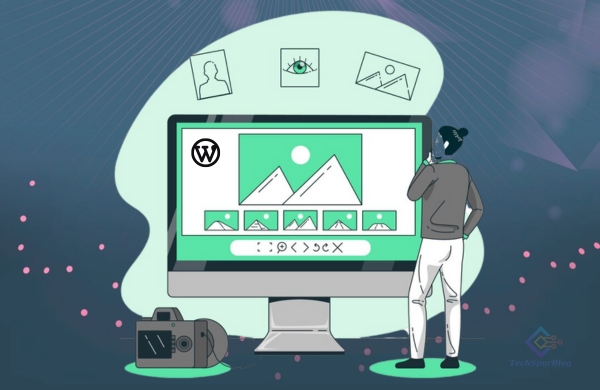
Images are the lifeblood of your WordPress website. They tell stories, evoke emotions, and make your content visually compelling. But unoptimized images can become anchors dragging down your website’s performance, frustrating your visitors, and even hurting your SEO ranking. Fear not, fellow web-slingers! This ultimate guide delves deep into the art of WordPress image optimization, equipping you with best practices, powerful tools, and advanced strategies to unlock your website’s true pixel power.
The Compression Crusade:
Let’s begin with the holy grail of image optimization: Compression. This magical process shrinks file sizes without compromising quality, making your website leaner and meaner.
But not all compression techniques are created equal. We have two main schools of thought:
Lossless Compression: Think of it as a magical shrinking spell! Tools like Smush and ShortPixel use clever algorithms to squeeze megabytes out of your images without sacrificing a single pixel of detail. Perfect for photos, illustrations, and any image rich in texture.
Lossy Compression: A delicate dance between size and quality. JPEGs excel here, accepting some visual trade-offs for dramatically smaller file sizes. Tools like Kraken and Imagify help you find the sweet spot between acceptable quality and minimal file bloat. Remember, it’s a balancing act!
Also Read: Exploring the Best Photo Editing Apps for Easy and Effective Editing
Resizing the Battlefield:
Don’t let WordPress resize massive images on the fly like an ogre trying to squeeze into a hobbit costume. It’s a recipe for sluggishness! Instead, downsize your images before you upload them.
Tools like Photoshop, GIMP, or even online services like ResizeImage.net become your allies in creating optimized thumbnails and smaller versions for different screen sizes.
Maximize the WordPress Arsenal:
WordPress itself holds valuable weapons in your image optimization arsenal. Don’t neglect them!
Utilize Custom Image Sizes: Set specific dimensions for featured images, thumbnails, and post content galleries to avoid scaling issues and ensure your images always appear crisp and sharp.
Embrace the Media Library: Use WordPress’ built-in Media Library to store and manage your optimized images efficiently. Categorize, tag, and organize them for easy retrieval and future optimization updates.
Content Delivery Networks: Speed Demons Unchained!
Imagine a network of lightning-fast servers strategically placed around the globe, ready to deliver your optimized images to your visitors in a blink. That’s the power of Content Delivery Networks (CDNs) like Cloudflare and MaxCDN.
They take the heavy lifting off your own server, serving images from locations closest to your visitors, dramatically boosting loading speed and page performance.
Also Read: Create Your Own Website Easily & Free with AI Website Builders
Beyond the Compression Frontier:
While compression and resizing are the core tactics, the optimization battlefield extends far beyond. Here are some advanced strategies to truly master the art:
Clean Metadata: Tools like EWWW Image Optimizer strip unnecessary data embedded within images, reducing file size without touching the pixels themselves. It’s like decluttering your digital attic!
Convert File Formats: Not all formats are created equal. Consider switching PNGs to JPGs for photos where appropriate, utilizing tools like WordPress’ built-in converter or plugins like JPEG Optimizer. Every byte saved counts!
Lazy Loading: Unleash the power of procrastination! Plugins like Lazy Load XL defer loading images below the fold until they’re needed, further improving initial page load speed. Let your visitors scroll in peace!
Tools of the Trade:
No warrior goes into battle unarmed. Here are some powerful tools to equip you for your image optimization quest:
All-in-one Plugins: Smush, ShortPixel, and Imagify offer a one-stop shop for compression, resizing, CDN integration, and even automated optimization. Consider them your trusty swords and shields.
Image Editors: For ultimate control and precision, wield the power of Photoshop or GIMP. These tools allow you to fine-tune compression levels, crop images, and even edit metadata for maximum efficiency.
Bulk Optimizers: Don’t let your existing image library become a performance drag! Plugins like WP-Optimize and EWWW Image Optimizer tackle your entire image collection with a single click, giving your website a much-needed speed boost.
Measure, Adapt, and Conquer:
Remember, optimization is not a one-time feat but an ongoing journey. Tools like Pingdom and GTmetrix become your trusted scouts, revealing your website’s loading speed before and after each optimization step. Use these insights to measure your progress, identify bottlenecks, and fine-tune your approach.
Prioritize Quality, Embrace Continuous Improvement:
While speed is king, don’t sacrifice visual quality on the altar of optimization. Aim for a balance between file size and visual fidelity that preserves the integrity of your content and delivers a positive user experience. Additionally, remember
Also Read: Adobe AI-Powered Tools for Realistic Vectors and Images
Conclusion
Image optimization is a crucial step in creating a fast, engaging, and SEO-friendly website. By mastering the art of compression, resizing, leveraging WordPress features, and employing powerful tools, you can unlock the true pixel power of your content and conquer the speed demons slowing down your site.

Leave a Reply